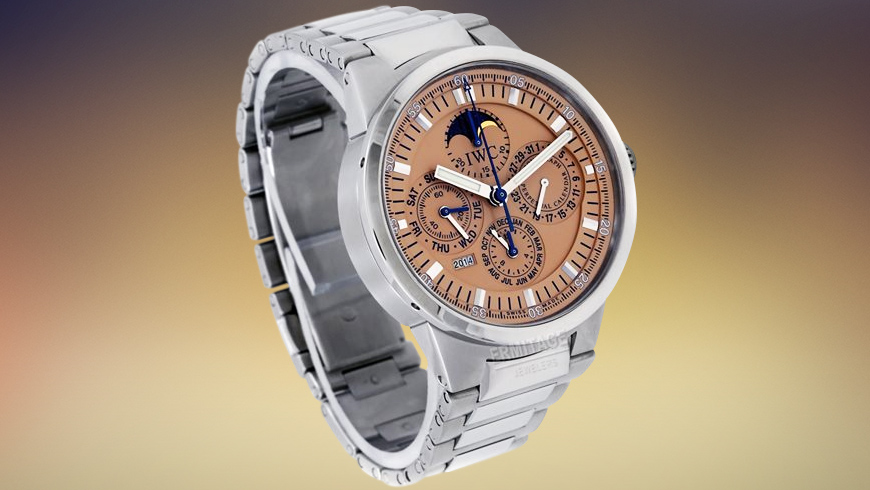One of the most notable and influential watches ever produced by IWC has to be the Pilots watch. Inspired by the cockpit of a plane and designed especially for the pilots, the watch line celebrated the evolution of aviation.
Pilot's Watch
In 1930's IWC saw the real need to produce a watch that would allow an aircraft pilot to safely tell time without the hassle of pocket watches or notoriously unreliable cockpit clocks. In 1936 IWC released its first wristwatch that was designed specifically for pilots. The watch featured a rotating bezel that allowed the pilot to keep track of short periods of elapsed time, a large dial with vivid, luminescent markers and hands to allow for better readability in the dark cockpit, an antimagnetic escapement movement, and an extremely sturdy crystal to protect from accidental strikes. The watch was bulky and unwieldy, but it was the first step to what will eventually become known as one of the best pilot's watches ever made.
Big Pilot's Watch 52 T.S.C.
In the 1940's, right in the middle of World War II, IWC begins production of Big Pilot's Watch 52 T.S.C. This large military watch came equipped with an IWC produced movement that followed military specification, had a 55mm case (huge by the standards of the time) and weighed 183 grams. To this day, Big Pilot's Watch 52 T.S.C. is the largest wrist watch that IWC ever produced. The design of the watch was largely influenced by the instrument cluster of the Ju52 airplane to promote readability and uniformity. The watch also featured central hacking seconds which allowed the pilot and the co-pilot to synchronize their watches own to the second.
Pilot's Watch Mark 11
As the time progressed, IWC continued to improve one of its most heroic watches. In 1948, the Schaffhausen watch manufacturer produced yet another iteration of the Pilots watch and called it Mark 11. The watch featured manual winding caliber 89 movement, an anti-magnetic inner case, and an extremely durable crystal. The watch was a favorite of Royal Air Force for more than 30 years due to its accuracy and durability. To this day, Mark 11 remains to be among some of the most highly thought after collector watches on the market.
IWC Establishes a New Industry Trend and Celebrates Aviation History
With the production of Pilot's Watch Chronograph Ceramic in 1998, unknowingly IWC brought two new trends to the watch making industry: the use of the ceramic bezel as well as the all black watch becoming a standard for aviation timepieces.
In 2002 Big Pilot's watch was re-launched with a new addition of Pellaton automatic movement, in 2003 IWC produced a Pilot's watch to commemorate a Spitfire aircraft, in 2012 the company released Pilot’s Watch Chronograph Edition Antoine de Saint Exupéry, a limited edition timepiece to commemorate Antoine de Saint Exupéry contribution during the World War II.

